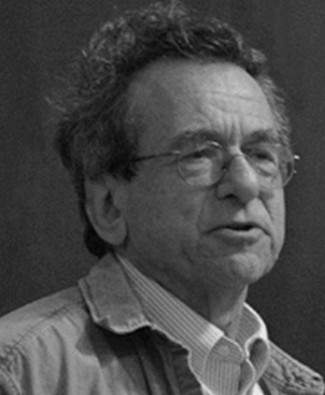About
Quantum mechanics forbids statements about the object. It deals only with the object-subject relation. — Schroedinger to Sommerfeld, 1931. A very early statement of QBism.
Having retired in 2006, I am no longer supervising Ph.D. students and have no postdoctoral positions to offer. Among my interests are these:
1. I have tried to put the subject of quantum computation together in a way that makes sense to computer scientists unfamiliar with quantum mechanics, physicists unfamiliar with computational complexity theory, and philosophers of science with an interest in quantum foundations. A book, Quantum Computer Science , incorporating my lecture notes was published by Cambridge University Press in August 2007. (Here are some errata.) And here are the slides from two lectures on the Shor algorithm , based on the book.
2. My interest in quantum computation has grown out of a longstanding interest in foundations of quantum mechanics. My recent writings on quantum information and related foundational issues can be found at arxiv.org. Several older essays on quantum mysteries for a more general audience (and much else) can be found in my collection Boojums All the Way Through, Cambridge University Press, 1990. Here are the slides from a lecture on Spooky Actions at a Distance?
3. I have a longstanding interest in the pedagogy and conceptual foundations of special relativity, having taught it on and off to Cornell students not majoring in science or mathematics for the past thirty years. For examples see the American Journal of Physics 65, 476-486 (1997) and 66, 1077-1080 (1998), and the relativity section of Boojums. My newer book on special relativity for the general reader, It’s About Time: Understanding Einstein’s Relativity was published (errata here) by Princeton University Press in September, 2005. (In 1968 I published Space and Time in Special Relativity. Since then I have learned much about teaching the subject.) Here are the slides from a physics colloquium on a purely geometric way to extract Minkowski’s space-time diagrams straight from Einstein’s postulates.
4. I have participated in a controversy between scientists and sociologists who study the growth of scientific knowledge, trying, with limited success, to explain to each side why the other thinks they are idiots. See, for example, my “Reference Frame” column in the October 1997 issue of Physics Today. My critical review of the major introductory text in the field appeared in Social Studies of Science 28, 603-647 (1998), together with a response from the authors. I have given an assessment of these exchanges in my contribution to “The One Culture”, J. A. Labinger and H. Collins eds., University of Chicago Press, 2001.
5. I have devoted a fair amount of intellectual effort to over thirty “Reference Frame” columns on a variety of topics that have appeared sporadically in Physics Today starting in 1988. Occasionally I expand them into (or condense them out of) lectures. Here, for example, is an expanded version of a column on questions for the 22nd century, given in Zurich in June, 2005. I plan to publish these columns in a book, accompanying them with remarks setting the historical context, bringing them up to date, describing some of the reactions they elicited, and expanding on technical points. The book will be published by Cambridge University Press in 2013. I devote a lot of energy to writing (Diary of a Nobel Guest) and even to writing about writing (Writing Physics).
6. I work hard at the piano, particularly Beethoven and Mozart. And Mozart and Beethoven.
7. I have written verses to accompany the world premiere of Mark G. Simon’s “Carnival of the Subatomic Particles,” a suite of 13 short musical portraits of subatomic particles, scored for flute, clarinet, violin, cello, and piano. A version of the verses, including 12 Onegin stanzas in praise of the Standard Model, can be found in the July 2007 issue of Physics Today.
8. Some people do not believe that I am the same N. David Mermin as the coauthor, with Neil Ashcroft, of Solid State Physics. I am. Although the book is still in its 1976 first edition, two thirds of it consists of eternal verities, and there is no time, even in a full-year course, to get to the remaining third.
Biography
Other books


Comments are closed.